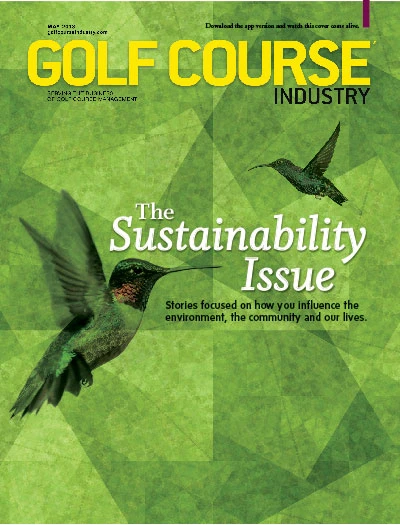 One day, Paul Carter came around the corner on the No. 5 hole at The Bear Trace at Harrison in Harrison, Tenn., and had to rub his eyes to make sure what he was seeing was real: 17 turkeys congregating in the fairway. As superintendent of the course since 2001, he had only seen one or two here or there. But 17? A superintendent with a different mind-set might have looked at them as a nuisance and immediately implemented a strategy to keep them off the course… but not Carter.
One day, Paul Carter came around the corner on the No. 5 hole at The Bear Trace at Harrison in Harrison, Tenn., and had to rub his eyes to make sure what he was seeing was real: 17 turkeys congregating in the fairway. As superintendent of the course since 2001, he had only seen one or two here or there. But 17? A superintendent with a different mind-set might have looked at them as a nuisance and immediately implemented a strategy to keep them off the course… but not Carter.
“Our attitude was that they were here first,” he says. “Our course is on state park property, and we’re operated by the Department of Environment and Conservation, so anything we can do for the environment, we do.”
After consulting with a local course that also had a large turkey population, Carter decided to purchase some cracked corn and put it down on the property. He didn’t want to spread it all over the course, though, so with some good old-fashioned ingenuity, he and his crew built a 6-foot feeder tube out of some leftover 4-inch, double-weld ADS drain tile and ran it up a tree. They drilled a couple holes at the top, with the theory being that as the turkeys ate the cracked corn, gravity would fill up the feeding trough at the bottom.
Unfortunately, all the animals came to the party: birds, squirrels, deer, you name it. And the crafty deer figured out if they knocked off the trough with their hoofs, all the corn would come pouring out. So Carter and his crew went back to the drawing board and came up with a different design using four-inch PVC tubes, which has so far thwarted the deer and other creatures and kept the corn for the turkeys.
The cost, says Carter, has basically been zero while the return on the investment has been through the roof.
“It’s great for the golfers, who don’t normally get to see turkeys,” he says. “People stop and take pictures of the wildlife, and they’ll come in the clubhouse and talk more about that than the golf course itself.”
Thanks to Carter and his crew’s efforts, about three dozen baby turkeys or “poults” have hatched at the course in the last three years. Their work with the turkeys as well as building mallard duck nesting tubes, bluebird and southern wood duck houses, and eliminating 50 acres of highly maintained turf has led to numerous awards: four consecutive GCSAA Environmental Institute for Golf awards, two Tennessee Governor’s Environmental Stewardship Awards, and certifications by Audubon International and the Groundwater Foundation.
A lot of Carter’s colleagues are now using his plans and designs on their own golf courses. He’s proud of what he and his crew have accomplished and is excited to continue down the path of sustainability.
“We’ve experienced nothing but success out of it, and it didn’t hardly take anything to do.”
Jason Stahl is a Cleveland-based writer and frequent GCI contributor.
Get curated news on YOUR industry.
Enter your email to receive our newsletters.
Explore the May 2013 Issue
Check out more from this issue and find your next story to read.
Latest from Golf Course Industry
- LOKSAND opens North American office
- Standard Golf announces new product lineup for 2025
- The Salt Pond taps Troon for management
- KemperSports selected to manage Swansea Country Club
- From the publisher’s pen: Grab that guide
- Introducing our April 2025 issue
- South Carolina leaders honor golf course superintendent
- One and only







